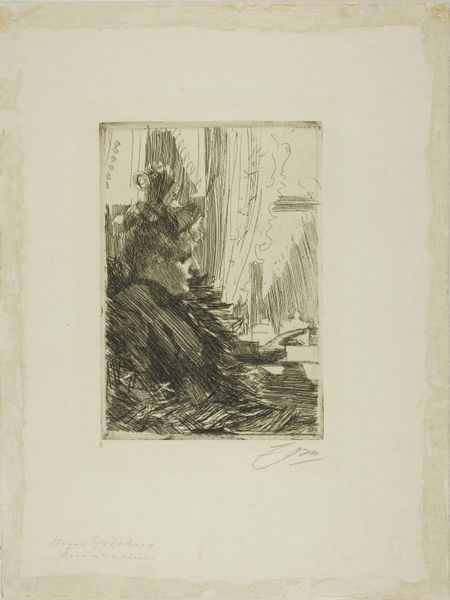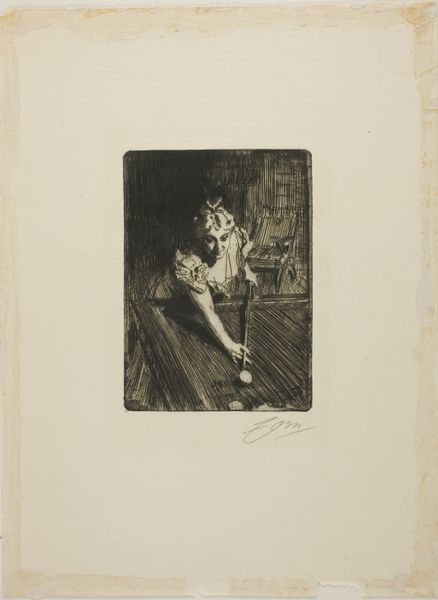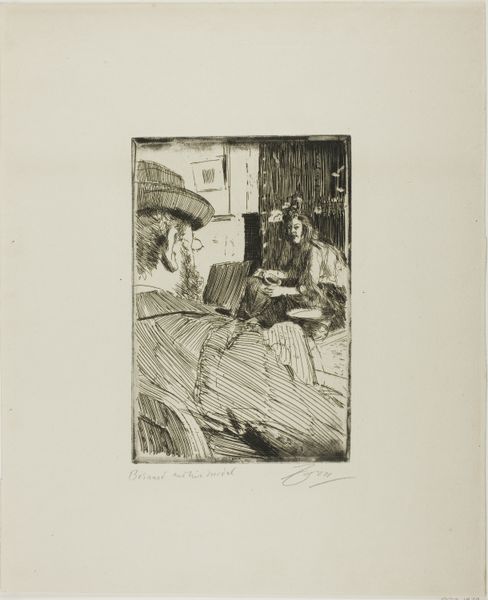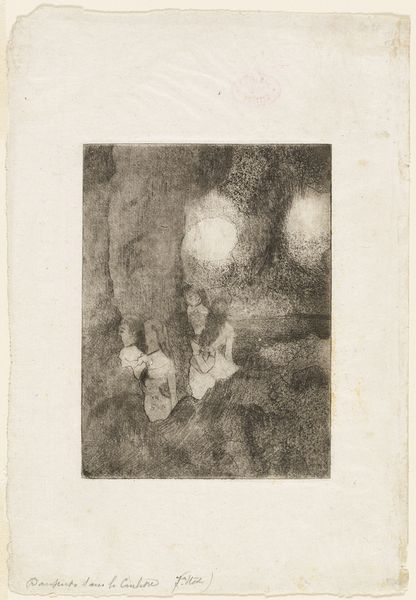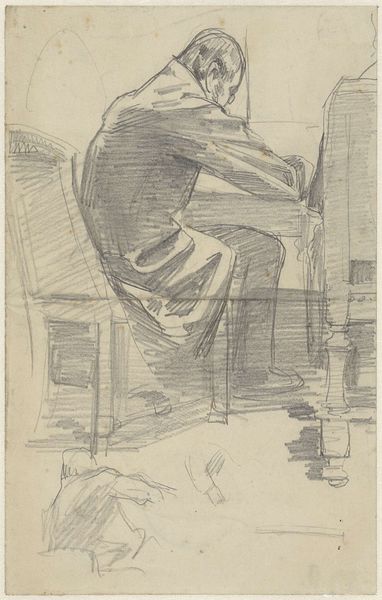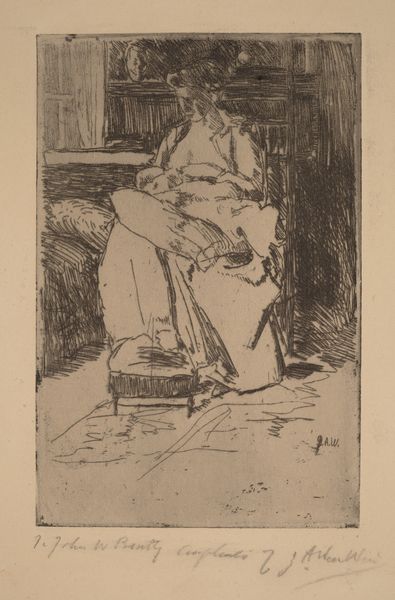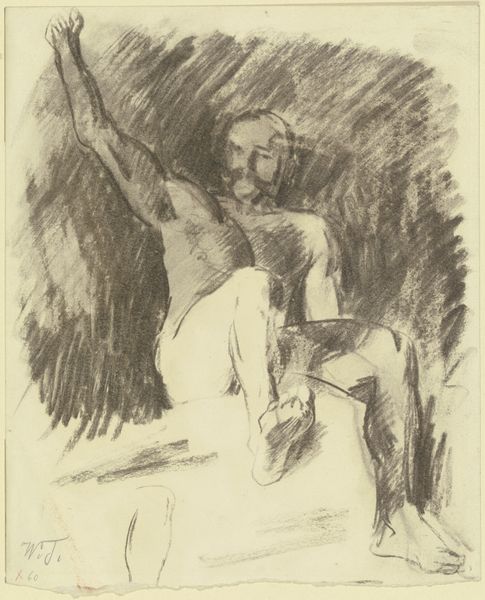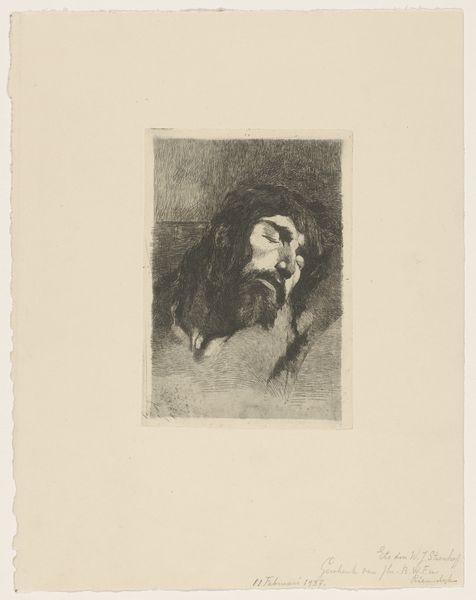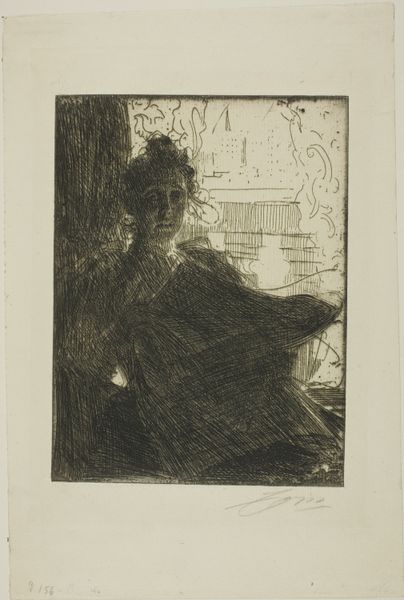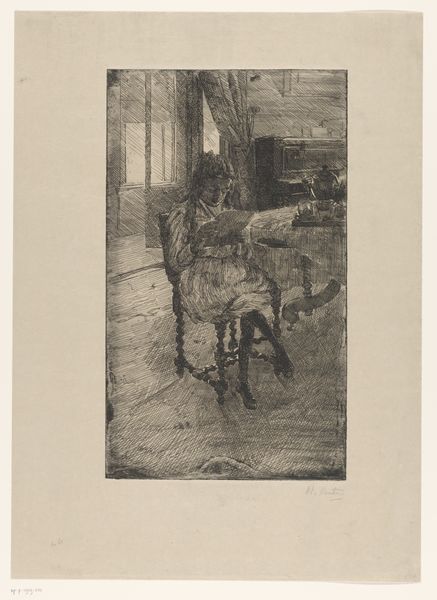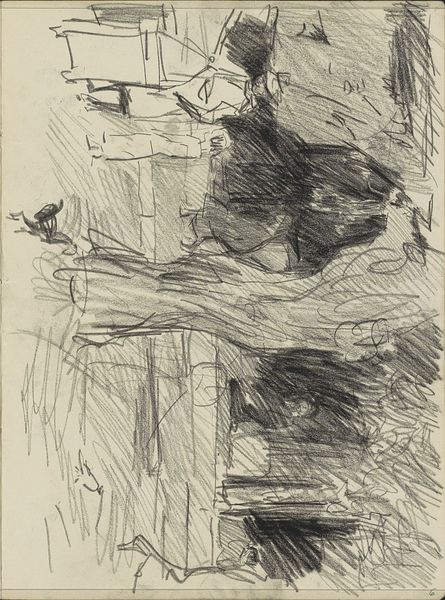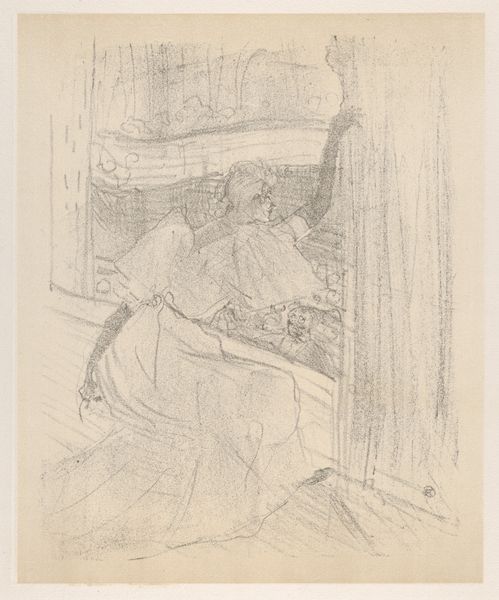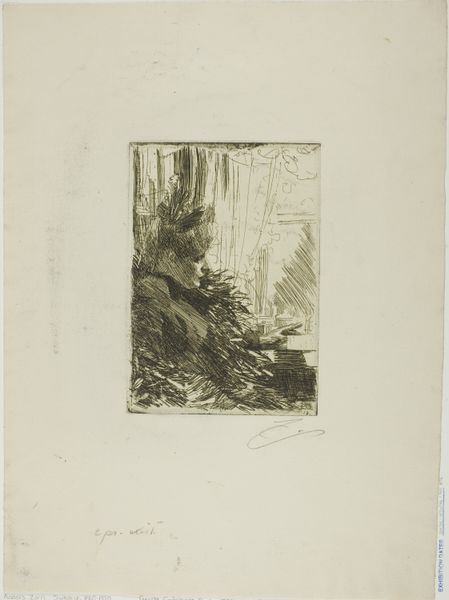
Dimensions: 246 × 179 mm (image/plate); 361 × 278 mm (sheet)
Copyright: Public Domain
Editor: Here we have Anders Zorn's "Musique en Famille" from 1905, a rather moody etching printed on paper. The light feels so focused on the guitar player, drawing me right in, but also casting almost ominous shadows around the rest of the group. What strikes you about this print? Curator: Ominous, you say? Interesting. To me, it’s more intimate, a fleeting snapshot. Zorn was a master of capturing light, and in this piece, it's less about drama and more about creating atmosphere, don't you think? Notice how the shadows actually soften the edges, pulling us into this domestic space. I almost feel like I can hear the strum of the instrument. What is music if not an interplay of shadow and light? Editor: I can see what you mean about the intimacy. So, would you say the impressionistic style is more about that personal feeling, less about, you know, trying to be perfectly realistic? Curator: Exactly! It's impressionistic in the sense that it captures an *impression* of a moment. Zorn wasn’t aiming for a photorealistic depiction; he was conveying the feeling of a family gathering, maybe a memory, distilled through the filter of time and emotion. Is this artwork speaking to a sense of intimacy with your own loved ones and gatherings? Editor: Definitely! Looking at it again, it’s warmer than I initially thought. I appreciate how Zorn uses light and shadow to bring out that cozy atmosphere, even in a black and white print. Curator: It makes me reflect on my own musical gatherings with my boisterous relatives. Editor: I think I see it now as a study of family life that leaves an impression on us precisely by the suggestive ways Zorn presents it. Curator: Beautifully said. Perhaps all great art reminds us of moments worth remembering.
Comments
No comments
Be the first to comment and join the conversation on the ultimate creative platform.

